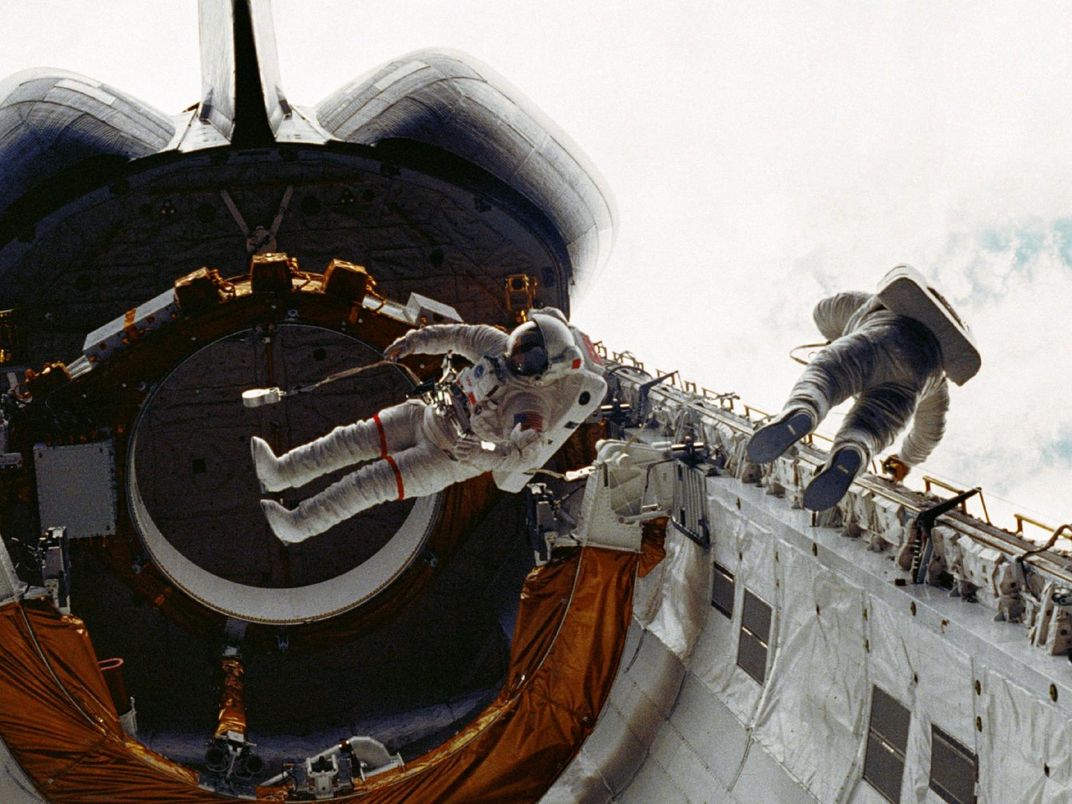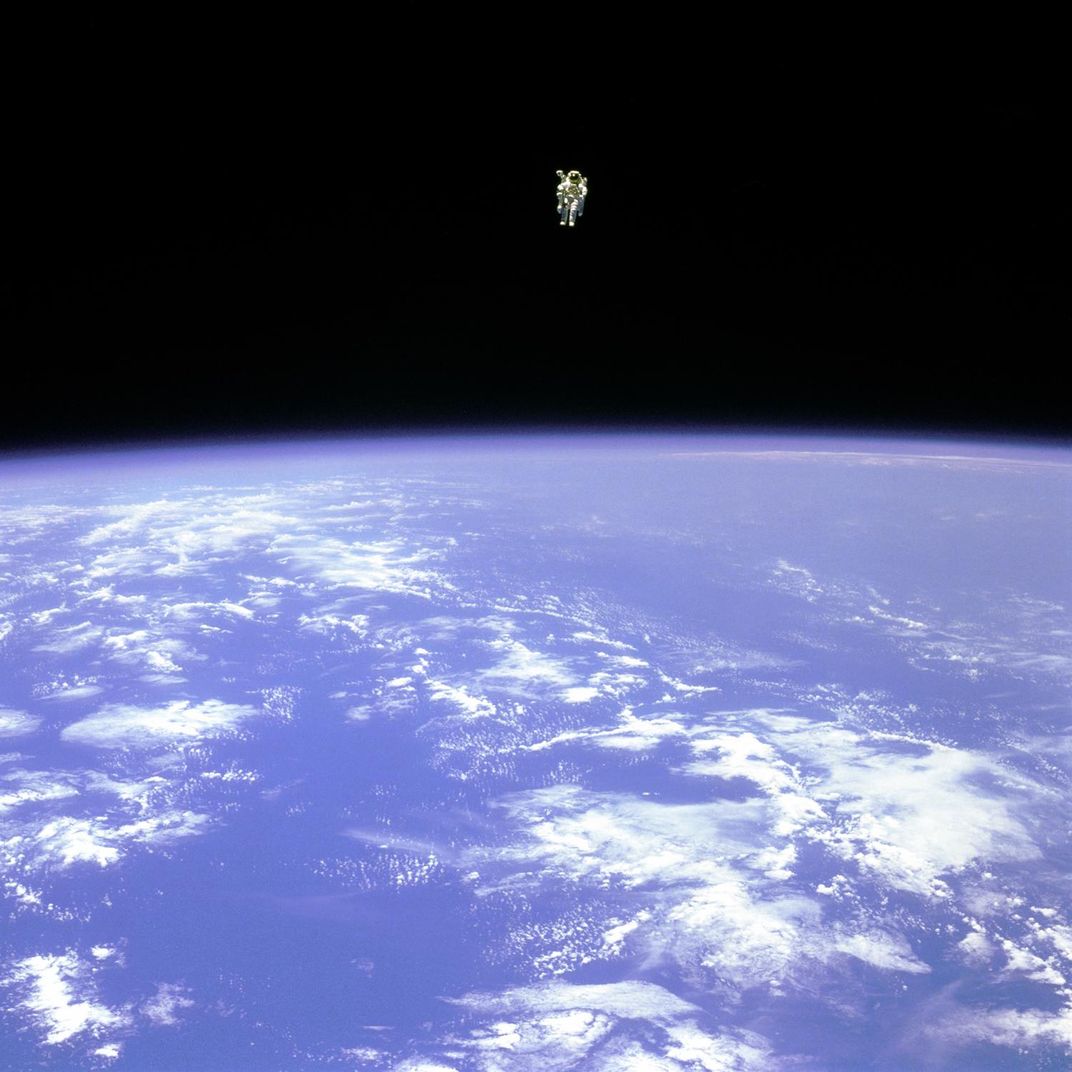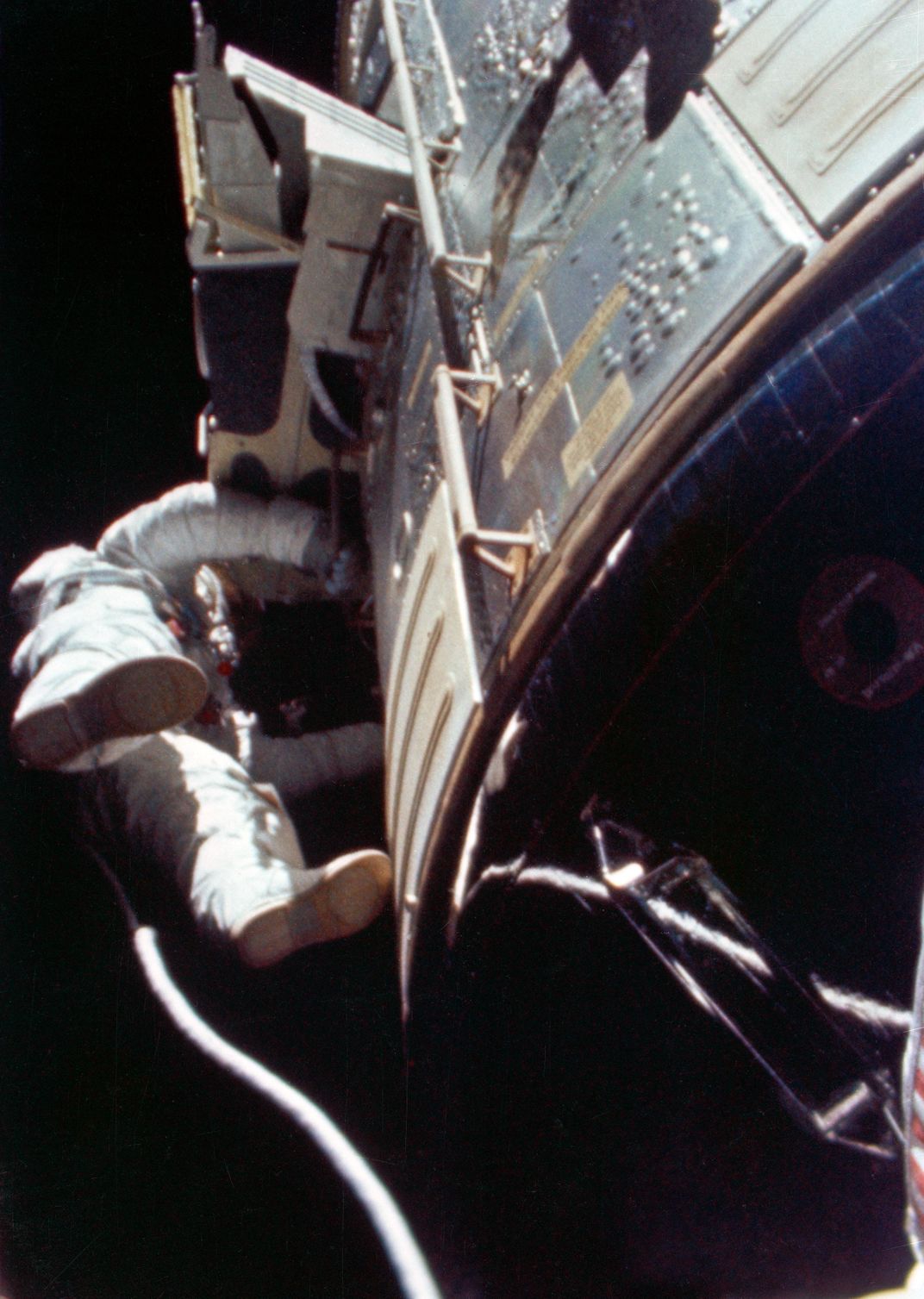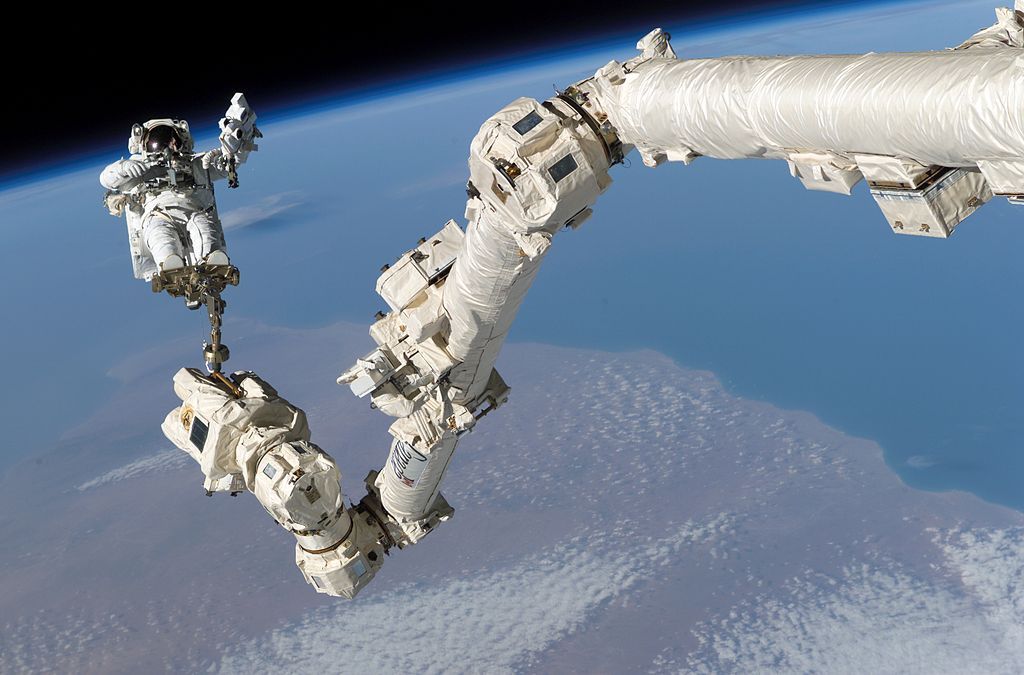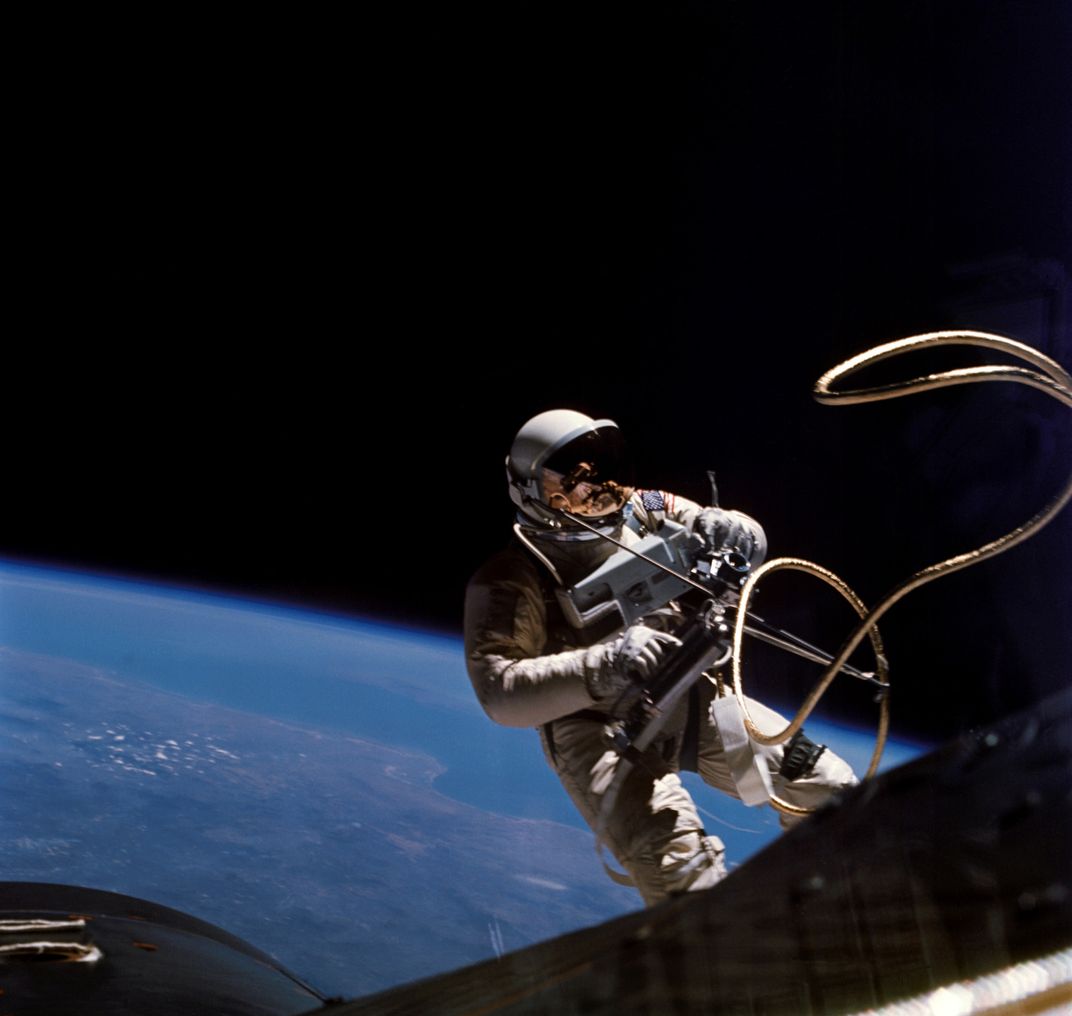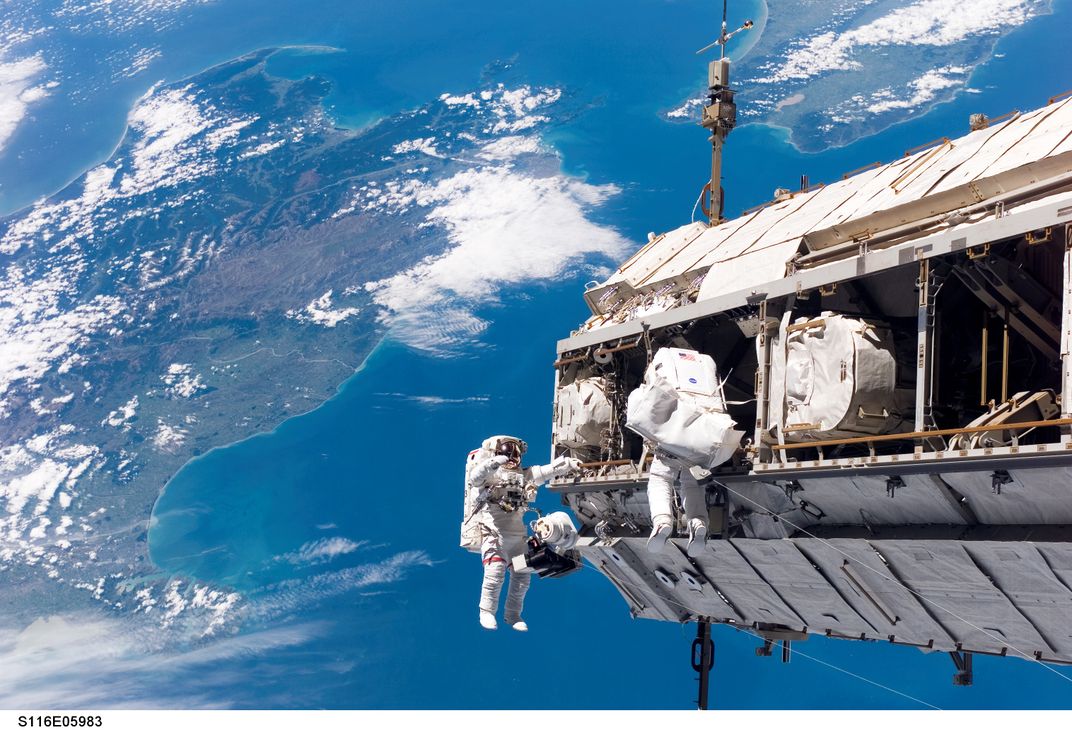‘The Stars and Sun Are Everywhere’: 50 Years of Spacewalks
Today marks five decades since cosmonaut Alexey Leonov became the first human to walk in space
/https://tf-cmsv2-smithsonianmag-media.s3.amazonaws.com/filer/2e/c8/2ec89540-fd2a-41f4-b28e-cc5ac5c71b2a/spacewalk_gemini4_f.jpg)
Fifty years ago today, Russian Cosmonaut Alexey Leonov did something no human had ever done before. He jumped out of a spacecraft and into space. "The silence struck me," he recalls, according to RT.com. "I could hear my heart beating so clearly. I could hear my breath — it even hurt to think."
He says that his heavy breaths were recorded and broadcast back to Earth, later to be used in 2001: A Space Odyssey. In this video of the first spacewalk, a narrator and music hide the silence, but Leonov bobs and floats at the end of his umbilical-cord-like tether. He drifts in front of the blue Earth and across the inky blackness of space. His historical walk lasted 12 minutes.
Less than three months later, on June 3, 1965, the Americans would catch up, and Edward White would be the second human to walk in space. The early efforts especially were challenging: space suits were awkward to maneuver, and the first walkers had difficulty getting back into the spacecraft. Leonov had to bleed some of the oxygen out of his suit to fit back in the airlock, pulled himself in head first instead of feet first and apparently lost six kilos, much of it in sweat, reports the Guardian.
White spent 23 minutes maneuvering to the end of his tether and back three times. At first he could use a hand-held gun designed to propel him, but after just three minutes the fuel on that device ran out, NASA writes. He had to twist his body and pull on the tether to get back. The efforts were exhausting but when asked to come back, White had the following exchange with Gemini 4 commander James McDivitt, reports Time:
McDIVITT: They want you to get back in now.
WHITE (laughing): I’m not coming in . . . This is fun.
McDIVITT: Come on.
WHITE: Hate to come back to you, but I’m coming.
McDIVITT: OK, come in then.
WHITE: Aren’t you going to hold my hand?
McDIVITT: Ed, come on in here … Come on. Let’s get back in here before it gets dark.
WHITE: I’m coming back in . . . and it’s the saddest moment of my life.
The photos of humans in spacesuits floating, tethered and free, that we’ve gathered over the last half century give some small hint as to what these explorers have experienced.
Of course, not all spacewalks were a dream. Many were dangerous. The third ever spacewalk lasted 2 hours and 7 minutes for Eugene Cernan of Gemini 9A. His visor fogged over completely, his pulse raced and he had trouble getting back in the spacecraft. He called it the "spacewalk from hell," BBC reports.
Yet the men and women continued to step out of the relative safety of spacecraft to make vital repairs, launch and activate the satellites and instruments we use to study space. And each and every time they get an amazing view. Leonov remembers, "While from inside the spacecraft cosmonauts could see only a small fraction of the scenery, outside the stars and the sun are everywhere… I did not expect all this."


